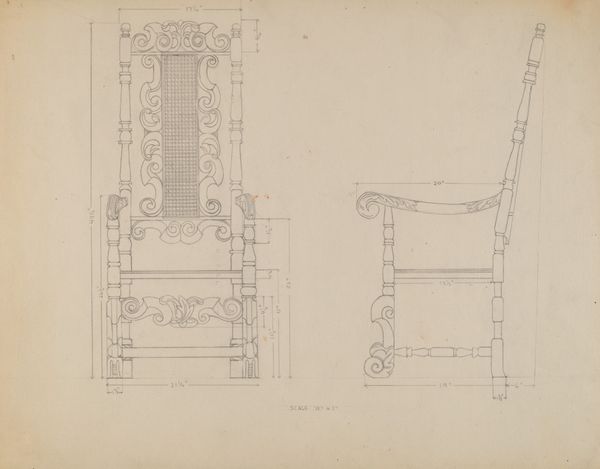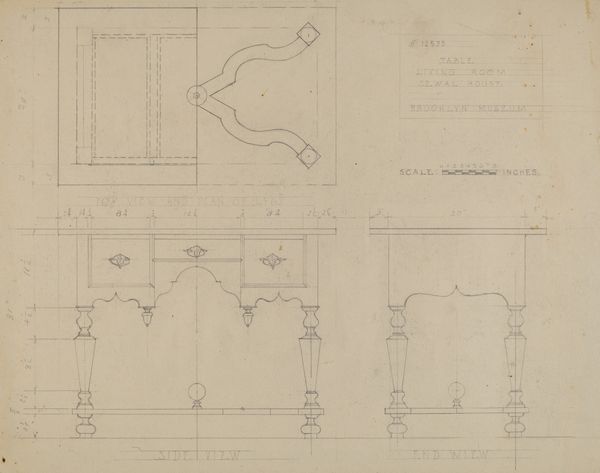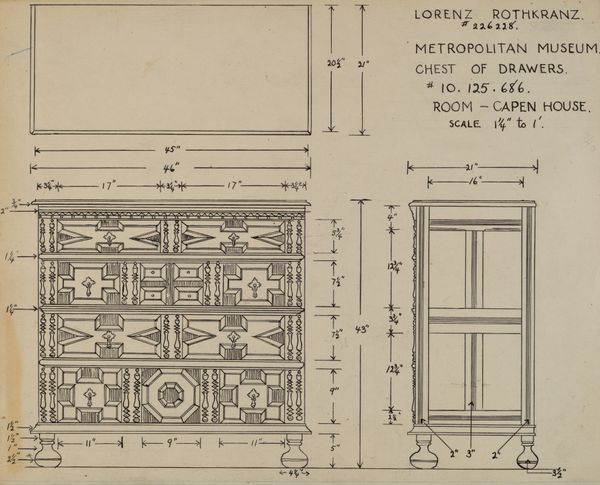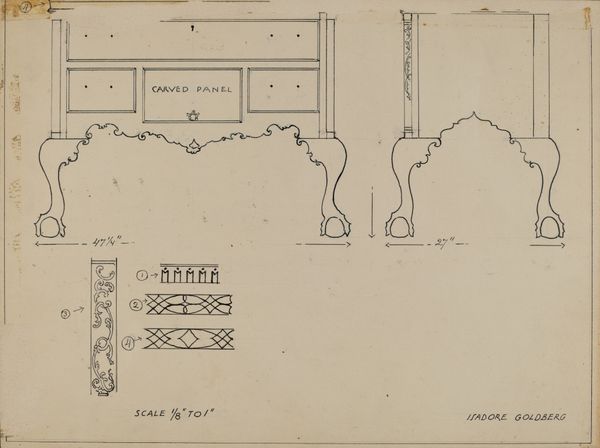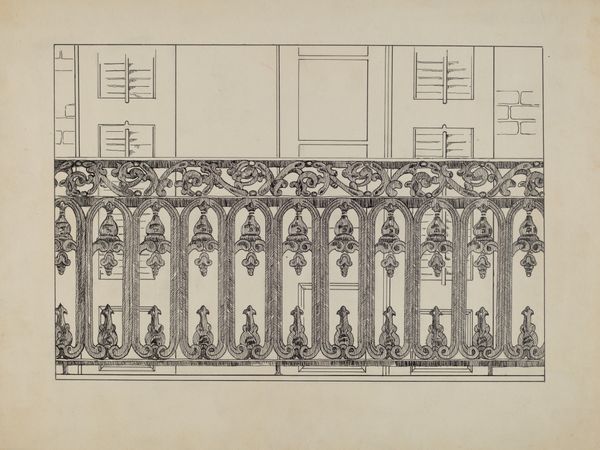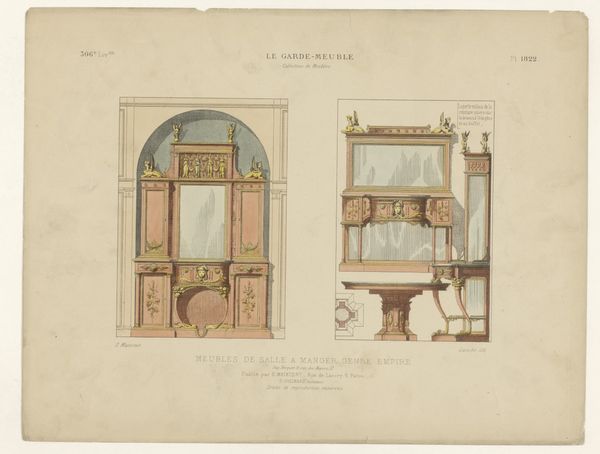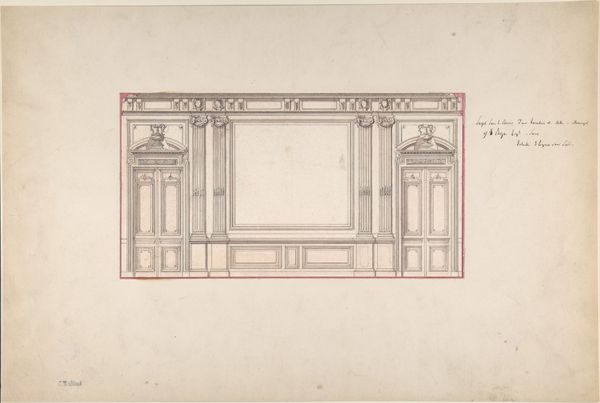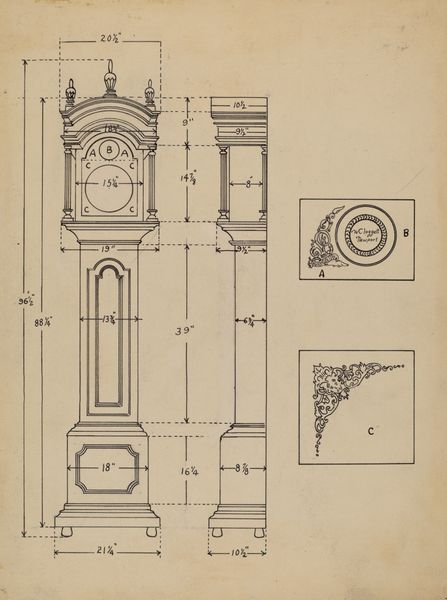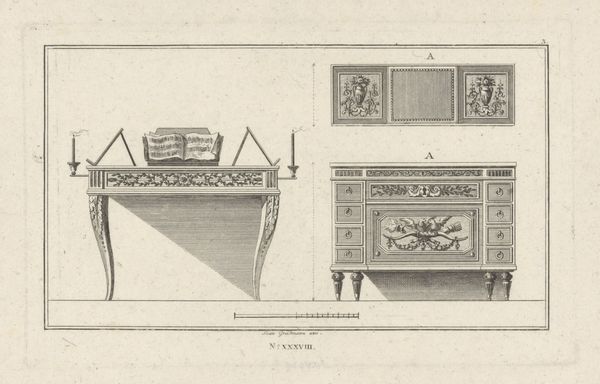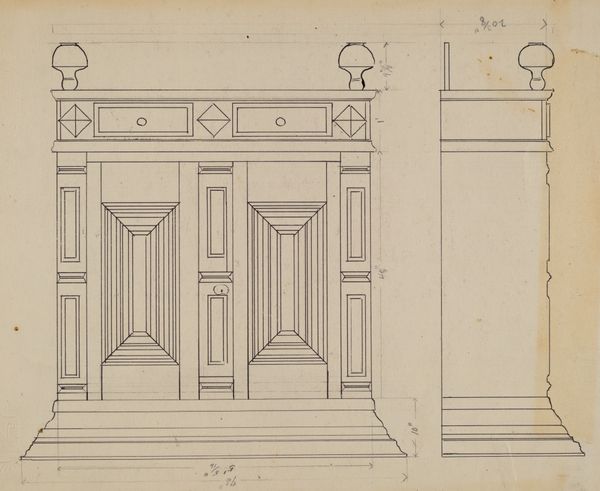
drawing, architecture
#
drawing
#
geometric
#
line
#
academic-art
#
architecture
Dimensions: overall: 23.1 x 30.5 cm (9 1/8 x 12 in.)
Copyright: National Gallery of Art: CC0 1.0
Curator: Here we have "Iron Fireplace," a drawing attributed to Thomas Byrne, dating circa 1936. Editor: At first glance, it strikes me as exceptionally ordered and linear, almost oppressively symmetrical. Curator: Indeed. This meticulous draftsmanship invites us to consider the era's focus on functional design and the social context in which such idealized domestic elements were promoted. Consider, for instance, the New Deal-era emphasis on the home and hearth. Editor: You're right, there's something quite calculated here. The intricate detailing around the firebox, counterposed against the rough stonework of the back. Curator: The choice of iron itself carries meaning. While we don't know if iron was available during this period, but the materiality connects to ideas of labor, industry, and even resilience in the face of hardship. Its geometric order attempts to domesticate this industrial feeling. Editor: Function, though, seems paramount, but is softened by a highly decorative veneer that looks, to my eye, utterly unsuited to its function. There's a tension in its geometry between the functional and purely aesthetic, which gives it a certain power. Curator: Absolutely. I’d push that further and suggest this tension encapsulates broader debates within that time, from labor rights to ideas surrounding functionalist aesthetics. We're not just looking at a fireplace; we're viewing a reflection of societal anxieties and aspirations materialized in form. Editor: The line work is incredibly precise, almost clinical. It's about establishing control and order in a design, and a structure— the formal elements working together. Curator: Precisely. And viewed through an intersectional lens, what this fireplace represents on multiple fronts offers an incredibly dense array of social meanings and statements regarding the relationship between design, labour and economics during that time. Editor: Seeing it that way opens up many fascinating insights. I find that so intriguing.
Comments
No comments
Be the first to comment and join the conversation on the ultimate creative platform.
